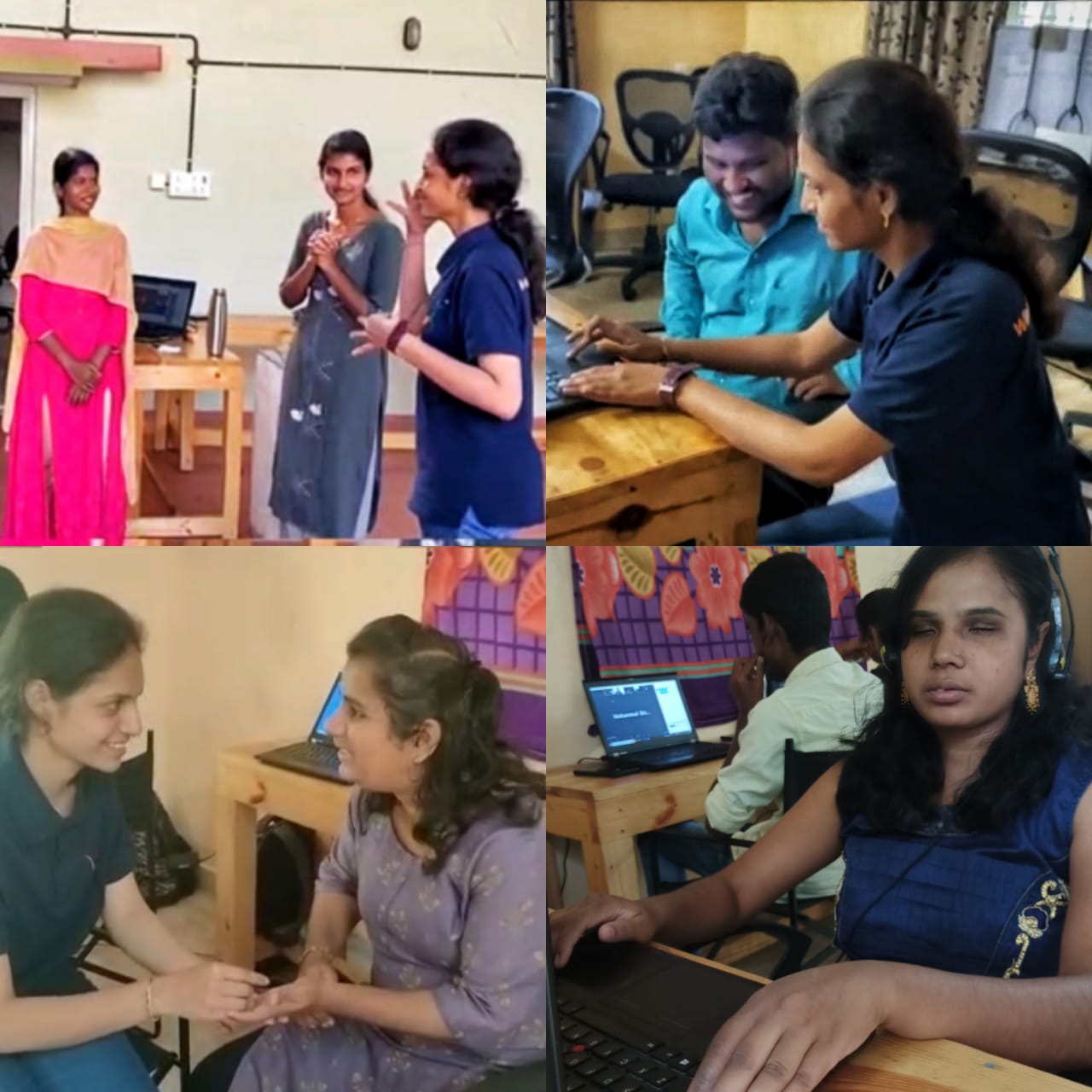A Paradoxical Communication!
19 September, 2022 | 7 min
Charles Pias

Have you wondered how persons with visual impairment effectively communicate with persons with hearing and speech impairment?
Today was my first day at the WinVinaya Foundation (WVF) as an intern and as a social work trainee and it was a very insightful first day as I was able to observe and interact with persons with disabilities (PWDs) and know how they go about their daily lives.
There are 21 categories of PWDs and of these, the foundation caters to the needs of 12 categories of PWDs. At a given point in time, there are persons with 6 different disabilities at the institution, which include persons with visual impairment (VI), Persons with hearing and speech impairment (HSI), persons with locomotor disability, and intellectual disability among others.
The most interesting part that I noticed is that persons with visual impairment use the gadgets that we all use generally for audio-visual purposes effortlessly and with such ease, even though they have a sensory perception of just one aspect of it.
I cannot think of using my laptop without a mouse or the trackpad. But the persons with Visual Impairment that I saw here did exactly that, they don’t use the mouse but rather rely on the keyboard and the talk-back facilities that the gadgets have, to navigate and use it to effect.
There are certain products like Non-Visual Desktop Access (NVDA) and Job Access with Speech (JAWS) for laptops while android smartphones have a talk-back facility that reads out the content on the screen for the user.
In essence, Persons with Visual Impairment rely on audio and their hearing abilities to get things done and to communicate in general.
As the day progressed, I saw persons with hearing and speech impairments using laptops and smartphones and I was curious to know about how they used them. I realized that they have closed caption support on devices to help in absence of audio inputs.
I learnt that Hearing and Speech Impairment is a spectrum. Some persons with Hearing Impairment use hearing aids, some have cochlear implants, or assistive listening devices depending on the extent of hearing loss they have.
They also use sign language to converse as effortlessly as we do with our speech and sight. They majorly depend on their visual abilities to go about their daily lives and this is something I find very interesting as Persons with visual impairment rely on their hearing abilities and are auditory learners and the persons with hearing impairments depend on their visual abilities and are hence visual learners.
I wondered, how do visual learners communicate with auditory learners? Although it sounds very difficult and complicated it is not. Seeing them work together is utterly amazing as they find a common ground to communicate with each other and if you guessed the sense of touch, you are absolutely correct!
They read the lips of the other person by feeling the vibrations of the other person’s voice and the movement of their lips. Alternatively, they place their thumbs and fingers on each other’s chins and cheeks but this method is very rarely used these days.
With the advent of technology, it has only been a boon for PWDs. They use WhatsApp, Telegram apps or notepads on laptops to communicate with each other without loss of information.
Many of my assumptions on what persons with disabilities can or cannot do were shattered. I realized that with better awareness, the society can be truly inclusive.
